Potty training is an important milestone, but it requires consistency and diligence to be successful. Potty training charts are helpful tools that provide motivation and positive reinforcement for toddlers learning to use the toilet. But creating an effective potty chart from scratch can be challenging for busy parents.
Having access to pre-made printable potty-training charts saves time and provides a professional resource. In this article, we’ll look at how potty charts work and provide free potty training chart templates to download. With fun and encouraging potty charts, parents can track progress, reward successes, and set their little ones up for restroom independence.
Table of Contents
What Is a Potty-Training Chart?

A potty-training chart is a tool used to help toddlers learn how to use the toilet successfully. The chart displays a grid with columns for dates/times and rows for tracking successes like using the potty, washing hands, staying dry, etc. Stickers or stamps are placed in the boxes to mark achievements.
Potty training charts provide visual motivation, help children understand the steps, and reward progress. Having a consistent potty chart keeps parents and toddlers engaged in the process together. Tracking successes on the chart and providing praise/incentives after potty time helps reinforce the desired behaviors. Potty charts turn training into a fun, rewarding experience that sets toddlers up for restroom independence.
Potty Training Chart Templates
Potty training charts are useful templates for parents to track their child’s progress in learning to use the toilet. These charts typically have columns to record details like time of day, successes, accidents, and stickers or stamps given as rewards. The rows can be dated to follow progress across days or weeks.
Potty training charts allow parents to note details helpful for discerning patterns in their child’s needs. For example, noting when accidents happen related to time of day, how long it’s been since the child last used the toilet, what room they were in, or what activities preceded the accident. Charts help assess readiness skills like indicating need to go, pulling pants down, sitting on the toilet, etc.
Customizable potty training templates make it easy to tailor the chart to the child. Parents can choose child-friendly stickers to mark successes like using the potty or staying dry. Charts help motivate children and allow them to see their progress, while giving parents a tool to identify areas needing work. Using a consistent template keeps all data organized in one place.
What Are The Benefits of Using a Potty Chart?
The use of a potty chart is a common practice during the challenging yet essential phase of toilet training. While its design may be straightforward, consisting of a grid or calendar for tracking progress, its impact can be profound. Employing a potty chart as a supportive aid in this developmental stage brings many advantages that go beyond just facilitating the transition from diapers to using the toilet. Here are some detailed benefits for both children and parents:
For Children
- Visual Reinforcement: Kids often respond well to visual aids. A growing row of stickers or stars on a potty chart gives children a tangible sense of accomplishment, reinforcing the behavior you want to encourage.
- Immediate Reward: The act of placing a sticker or a mark on the chart is an immediate reward that follows directly after successful potty use, reinforcing the desired behavior through instant gratification.
- Goal Setting: You can use the chart to set small, achievable goals for your child. This could be as simple as “three stickers in a row” to earn a small prize, teaching them the value of working toward objectives.
- Engagement: The act of interacting with the potty chart (choosing stickers, placing them, observing patterns) engages the child actively in the process, making them more aware and invested in their own toilet training.
- Positive Association: The fun aspect of using stickers or markers can help create a positive association with using the potty, making the child more willing and even eager to use it.
- Enhanced Self-Esteem: Successfully adding to their potty chart gives children a sense of accomplishment, contributing to improved self-esteem and self-efficacy.
- Skill Development: Besides toilet training, a potty chart also indirectly teaches other valuable skills like basic counting, understanding sequences, and even early math if the rewards are based on reaching certain numbers of stickers.
- Routine Establishment: As the chart fills up, children can see the pattern of their own routine, which reinforces the notion of a consistent schedule.
For Parents
- Tracking Progress: For adults, a potty chart serves as an easy method for keeping track of how well the toilet training is progressing. It may also help you identify patterns or timing, like specific times of day when your child is more successful.
- Convenience: With a potty chart, it’s easy to see how your child is doing, saving time and reducing the need to keep mental or written notes.
- Effective Communication: The chart can serve as a communication tool between different caregivers. If a child is cared for by grandparents, babysitters, or at a daycare, everyone can easily update and consult the chart.
- Positive Reinforcement: The chart not only serves as reinforcement for the child but also for the parent. Seeing a row of stickers can encourage you that your efforts are paying off.
- Quantifiable Rewards: By tying rewards to the chart (e.g., 10 stickers lead to a small toy), parents can set concrete milestones that are transparent and easy for a child to understand.
- Enhanced Interaction: The process of updating the chart gives parents and children a moment to interact positively, reinforcing the parent-child bond.
- Behavioral Insight: In the case of setbacks or regressions, the chart can provide clues as to what might be affecting your child’s performance, e.g., changes in routine, diet, or sleep patterns that coincide with less frequent use of the potty.
- Flexibility: Charts can be customized to suit the needs and preferences of the child, making them a flexible tool. Themes, colors, types of rewards, etc., can be easily adjusted.
Preparing Of a Potty-Training Chart
Preparing a potty chart involves a few key steps that set the stage for a successful potty-training journey. Here are some details on what you’ll need and how to go about it:
Supplies Needed
- Chart or Calendar: This could be a simple printable chart, a DIY grid on poster board, or even a calendar designated solely for this purpose. Some people also prefer digital versions they can update on their tablets or smartphones.
- Stickers/Markers: These are used to mark successful potty attempts. Choose stickers or markers that your child will find appealing, as this increases the reward value.
- Dry-Erase Markers (Optional): If you’re using a laminated chart or a whiteboard, dry-erase markers can be helpful for making temporary marks or notes.
- Tape or Magnets: Depending on where you’re planning to hang the chart, you’ll need a way to secure it. Tape works well for walls, while magnets are useful for fridges.
- Small Prizes/Rewards: For some kids, stickers alone might not be enough of an incentive. Having a collection of small toys, books, or special treats can work as extra motivation.
- Clipboard and Pen: For those who prefer to keep track with more detail, like time of day or type of potty use (urination vs. defecation), a clipboard and pen next to the chart can be helpful.
- Camera (Optional): For those who like to document milestones, capturing the moment when a row or a whole chart is filled can be a special way to remember this stage.
Setting the Stage for Success
- Choose an Accessible Location: Hang the potty chart in a place that is easily accessible and visible to your child. This often means at their eye level near the bathroom, or in another central location where they can see and interact with it regularly.
- Explain the Chart: Before you begin, explain to your child what the chart is for and how it works. Make sure they understand the association between successful potty use and placing a sticker or mark on the chart.
- Involvement: Let your child be involved in the set-up process. They could help hang the chart or choose the stickers, making them feel more invested in the process.
- Initial Demonstration: Do a run-through or a demo of how to use the chart. You can make it a fun, ceremonial event to place the first sticker, establishing a positive tone from the start.
- Set Achievable Goals: Make sure the goals you set (like one sticker for pee, two for poo, or a special sticker for a day without accidents) are achievable and age appropriate.
- Clarify Rewards: If additional rewards beyond stickers are given for reaching certain milestones, make this clear from the start so your child knows exactly what to aim for.
- Regular Reminders: Especially at the beginning, provide regular reminders to your child about the potty chart, encouraging them to view and interact with it. You can make it a part of your daily routine to review the chart together.
- Be Consistent: Once you start using the potty chart, consistency is key. Make sure to mark down successes as they happen to maintain the integrity of this training tool.
- Maintain Enthusiasm: Show excitement whenever your child gets to put a sticker on the chart. Your positive reinforcement is an additional emotional reward for them.
How to Use Potty Training Charts
Simply handing a child a blank chart without guidance can lead to confusion and stalled progress. Following proven techniques sets parents and toddlers up for potty chart success. In this article, we’ll provide a step-by-step guide to maximizing potty charts during training. We’ll cover potty chart basics like selecting a design, placing it visibly, using stickers/stamps, offering praise, tracking accidents, transitioning off the chart, and more. With these practical steps for using potty charts effectively, parents can create positive experiences that help toddlers excel at toilet time. Here are the key steps we’ll share to help you and your toddler get the most out of potty-training charts:
Step 1: Choose or Create Your Potty-Training Chart
First, you’ll need to decide what type of potty-training chart you want to use. You can either make one yourself using a sheet of paper and markers, or you can find printable charts online. Some charts have spaces for stickers, while others might have rows and columns for checkmarks or dates. Make sure the chart is visually appealing to your child with bright colors or characters they like. Hang the chart in a place that is easily accessible and visible to your child, in the bathroom or on the fridge.
Example: If your child loves dinosaurs, you might create a chart with a Jurassic theme. Each time your child uses the potty successfully, they can put a dinosaur sticker on the chart.
Step 2: Explain the Chart and Establish Rewards
Once you have your chart in place, sit down with your child and explain how it will work. Talk about the importance of using the potty and how the chart will help them track their progress. Make sure to explain what the rewards will be for filling up a row or column. The rewards should be something that motivates your child but try to avoid food rewards, as this can set up an unhealthy relationship with food.
Example: Tell your child that each time they successfully use the potty, they get to put a sticker on the chart. Once they accumulate 5 stickers, they can choose a small toy from a “treasure chest” of rewards that you’ve prepared in advance.
Step 3: Implement the Chart
Now that everything is set, it’s time to put the chart into practice. Each time your child successfully uses the potty, celebrate the achievement and allow them to place a sticker or mark on the chart. Make a big deal out of this; positive reinforcement can make the process feel rewarding for your child.
Example: If your child successfully goes to the potty, cheer and clap with them, then guide them to the chart to place a sticker. Talk about how many more stickers they need to earn a reward, reinforcing the excitement and anticipation.
Step 4: Offer Rewards and Update the Chart
As your child fills up the rows or columns, offer the rewards established in Step 2. This is also a good time to talk about any adjustments or updates to the chart. For instance, if you initially set a low threshold for rewards to get the ball rolling, you may want to increase the requirements as your child gets more accustomed to the process.
Example: Once your child earns 5 stickers and chooses a small toy from the treasure chest, praise them for their accomplishment. You might then say that the next reward will come after 7 stickers to encourage further progress.
Step 5: Phase Out the Chart
After a period of successful potty training, you’ll want to phase out the chart gradually. Start by increasing the number of successes required for a reward, or by offering rewards less frequently. Eventually, the habit of using the potty should become ingrained enough that the chart is no longer necessary.
Example: Once your child has been consistently successful for several weeks, tell them that from now on, they’ll need 10 stickers for a reward instead of 5. Over time, you can continue to increase this number until the chart is no longer needed.
Common Challenges and How to Overcome Them in Using a Potty-Training Chart
Potty training is a journey filled with ups and downs. Even when using helpful tools like a potty-training chart, parents and caregivers may encounter some challenges. Here are some common issues you might face and strategies for overcoming them:
Resistance
One of the first challenges you may encounter is resistance from your child. Some children might not show interest in the potty-training chart or may not understand its significance.
Strategies for Overcoming Resistance:
- Involve Them in the Setup: Let your child be a part of the process of creating or setting up the chart. Allow them to place the first sticker or make the first mark, so they feel ownership over the chart.
- Make It Fun: Turn the process into a game or a fun activity. Make sure the rewards are something that genuinely excites your child.
Example: If you notice that your child is ignoring the chart, try getting more animated when it’s time to place a sticker. Make a mini-ceremony out of it—drumrolls, clapping, and all—to make your child feel like a star when they use the potty.
Accidents
Accidents are inevitable, especially in the early stages of potty training. An accident can be discouraging and can make the child (and parent) want to give up on the chart.
Strategies for Overcoming Accidents:
- Normalize It: Let your child know that accidents are a normal part of the learning process.
- Don’t Penalize: Avoid removing stickers or giving any form of punishment for accidents. This could make the child associate negative feelings with the potty-training process.
Example: If an accident occurs, instead of focusing on the negative, redirect attention to the progress made on the chart. Say something like, “Oops, that’s okay! Look how many stickers you’ve already got! Let’s try another one next time.”
Slow Progress
Another challenge is slow progress. It’s easy for both parents and children to get discouraged when the stickers or checkmarks aren’t accumulating quickly.
Strategies for Overcoming Slow Progress:
- Re-Evaluate Rewards: If progress is slow, consider whether the rewards are motivating enough for your child. Sometimes a change in rewards can spur more interest.
- Offer Encouragements for Small Wins: If your initial setup required too many successful potties used for a reward, consider reducing that number initially to make it easier for your child to earn rewards.
Example: If you find that your child is losing interest because they’re not earning rewards quickly enough, you might adjust the chart so that they earn a reward after just two or three successful potty uses. Once they’ve experienced the thrill of earning a reward, you can gradually increase the required number of stickers for future rewards.
Adaptation and Evolution of the Potty-Training Chart
As you and your child go through the potty-training journey, you’ll find that circumstances need change. Adapting and evolving the potty-training chart to fit these changing needs can help sustain your child’s interest and maintain momentum. Here are some aspects to consider.
When to Adjust
Recognizing when it’s time to modify your potty-training chart is crucial for ongoing success. In the beginning, your child was extremely motivated by the rewards and the novelty of the chart. However, as time passes, they may lose interest, or conversely, the task may become so routine that the chart no longer serves as a strong motivator.
Strategies for Adjusting:
- Monitor Engagement: Keep an eye on how your child interacts with the chart. If they seem less excited about placing stickers or earning rewards, it might be time to mix things up.
- Review the Reward System: If the rewards are no longer motivating, consider updating them with something more appealing to your child.
Example: If your child initially loved placing colorful star stickers on the chart but now seems uninterested, consider switching to fun character stickers from their favorite show. Alternatively, if you started with daily rewards and realize the excitement is waning, switch to a more challenging, but more exciting, weekly reward.
Transitioning out of the Chart System
Eventually, the goal is to have your child use the potty independently without needing a chart for motivation. Knowing when and how to transition out of the chart system is as important as knowing how to use it.
Strategies for Transitioning Out:
- Gradual Increase in Requirements: Start by slowly increasing the number of successful potty uses needed for a reward. This can make the transition less abrupt and helps to instill the habit of regular potty use without external rewards.
- Fading Out: Begin to remove the chart subtly from your potty routine, initially just not mentioning it, and later removing it from its place altogether.
Example: If your child has been consistently successful, you might first extend the rewards requirements from every 5 stickers to every 10. After sustaining this pattern for a few weeks, you can introduce the idea that soon they won’t need the chart at all. You can say something like, “You’re becoming such a big kid, soon you won’t even need this chart!”
Adapting your potty-training chart as your child grows and evolves in their training will keep the tool effective. And when it’s time to move on, a gradual transition can help cement the habits your child has learned, making the overall potty-training process smoother and more successful.
Conclusion
Using a potty-training chart can make the toilet training process easier and more engaging for parent and child alike. In this article, we’ve covered the benefits of potty charts, how to use them effectively, and key steps for maximizing their impact. With the wide selection of fun, colorful potty-training charts provided, you now have helpful resources to incorporate into your toddler’s toilet training journey.
Choose a motivating potty chart design and display it prominently so your toddler gets excited to use the potty and chart their progress. Pair the chart with consistent encouragement and incentives to reinforce successes. These printable potty charts transform training from a struggle into a rewarding experience. Download your favorites potty training templates today to start your toddler on the path to restroom independence!
FAQs
At what age should I start using a potty-training chart?
The age to start potty training—and by extension, using a potty-training chart—varies by child. Children are ready for potty training between 18 and 24 months, although some may not be ready until they’re 3 years old or older. It’s best to look for signs of readiness in your child, such as showing interest in the toilet or indicating awareness of when they need to go.
How long should we use the potty-training chart?
The length of time you should use a potty-training chart depends on your child’s progress and individual needs. Some children may only need it for a few weeks, while others might benefit from using it for a few months. The goal is to phase out the chart once your child is consistently using the potty without needing external motivation.
Can I use digital apps instead of a physical chart?
Yes, there are several apps designed to help with potty training that function much like a traditional chart but in a digital format. The choice between a physical chart and an app often comes down to personal preference and what you think will engage your child the most effectively.
What should I do if my child loses interest in the potty-training chart?
If your child loses interest, consider refreshing the rewards or making the chart more visually engaging. You can also involve your child updating the chart to regain their interest. It’s essential to adapt the chart to your child’s changing needs and preferences.
Do I have to offer physical rewards, or can praises and claps suffice?
Physical rewards are not a requirement. Verbal praises, claps, and positive affirmations can also serve as effective rewards. The key is to find what genuinely motivates your child and helps them associate positive feelings with using the potty.
My child is having frequent accidents. Should I stop using the potty-training chart?
Frequent accidents are a common challenge in potty training. Rather than discontinuing the use of the chart, consider it as a tool to understand and improve the potty-training process. Make sure not to penalize your child for accidents; instead, keep encouraging them for their efforts.
How can I phase out the use of the potty-training chart?
To phase out the chart, you can start by increasing the number of successful potty uses required to earn a reward. Once your child becomes more consistent, you can begin to introduce the concept that they are becoming a “big kid” who doesn’t need a chart anymore. The goal is to make the transition gradual and positive.























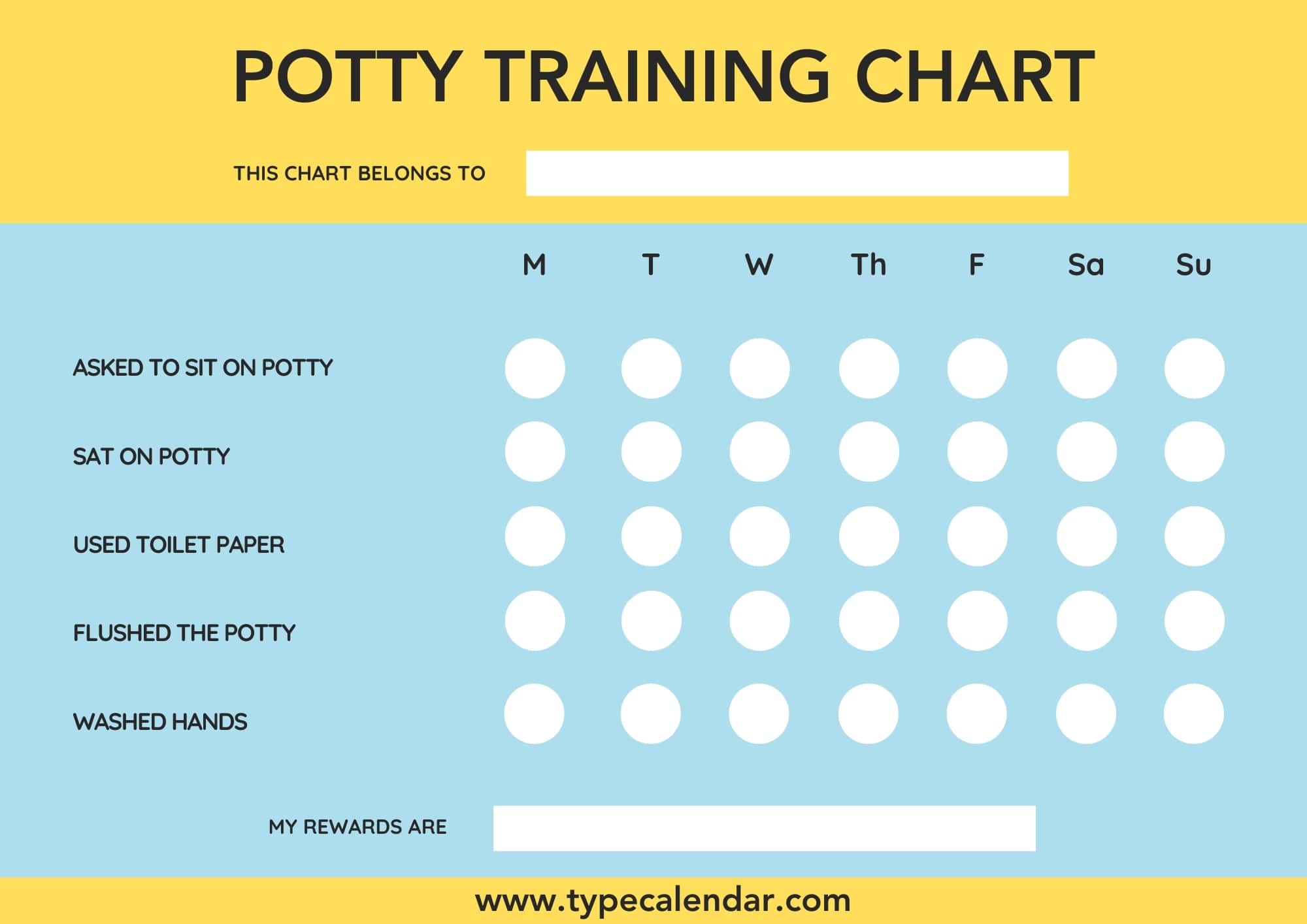



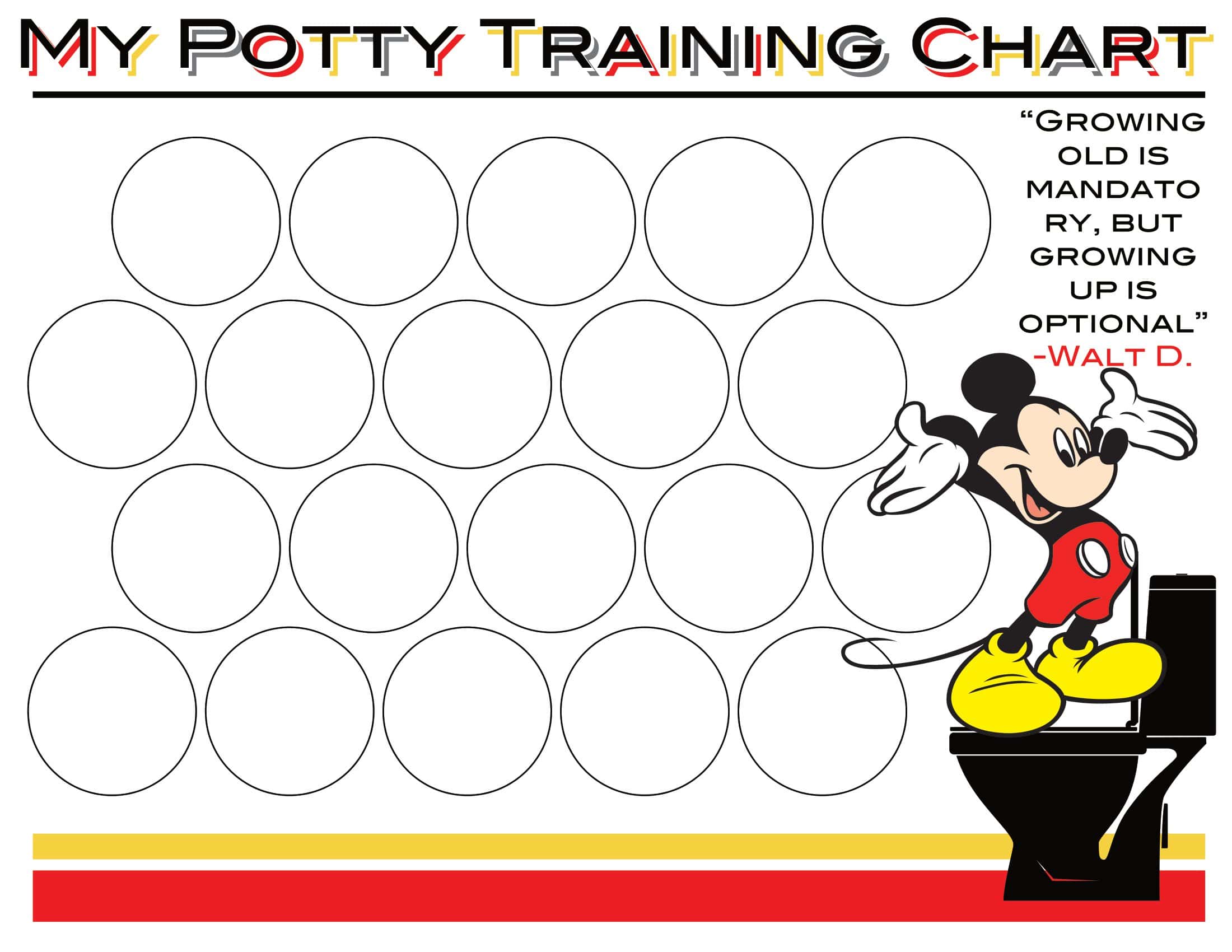


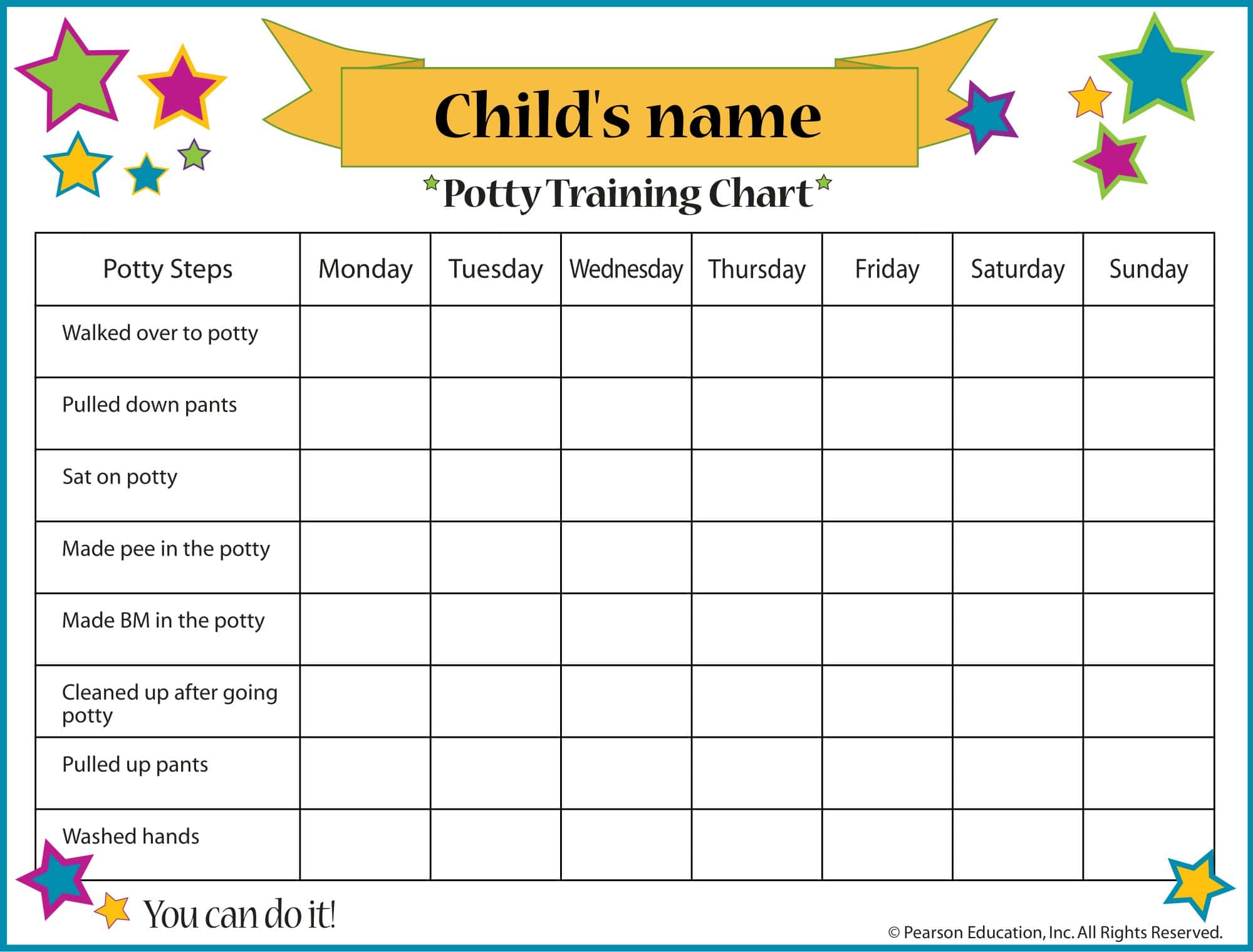


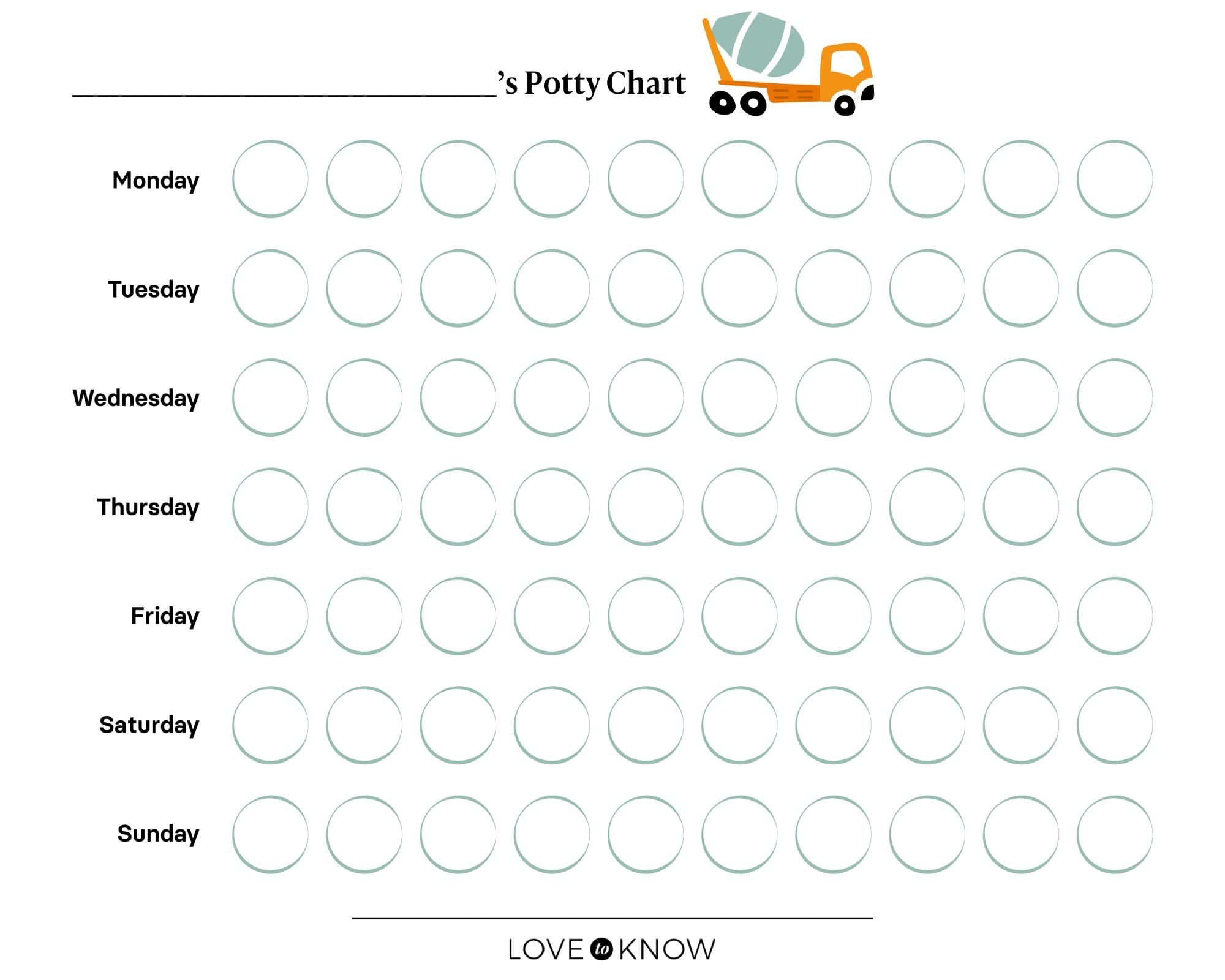

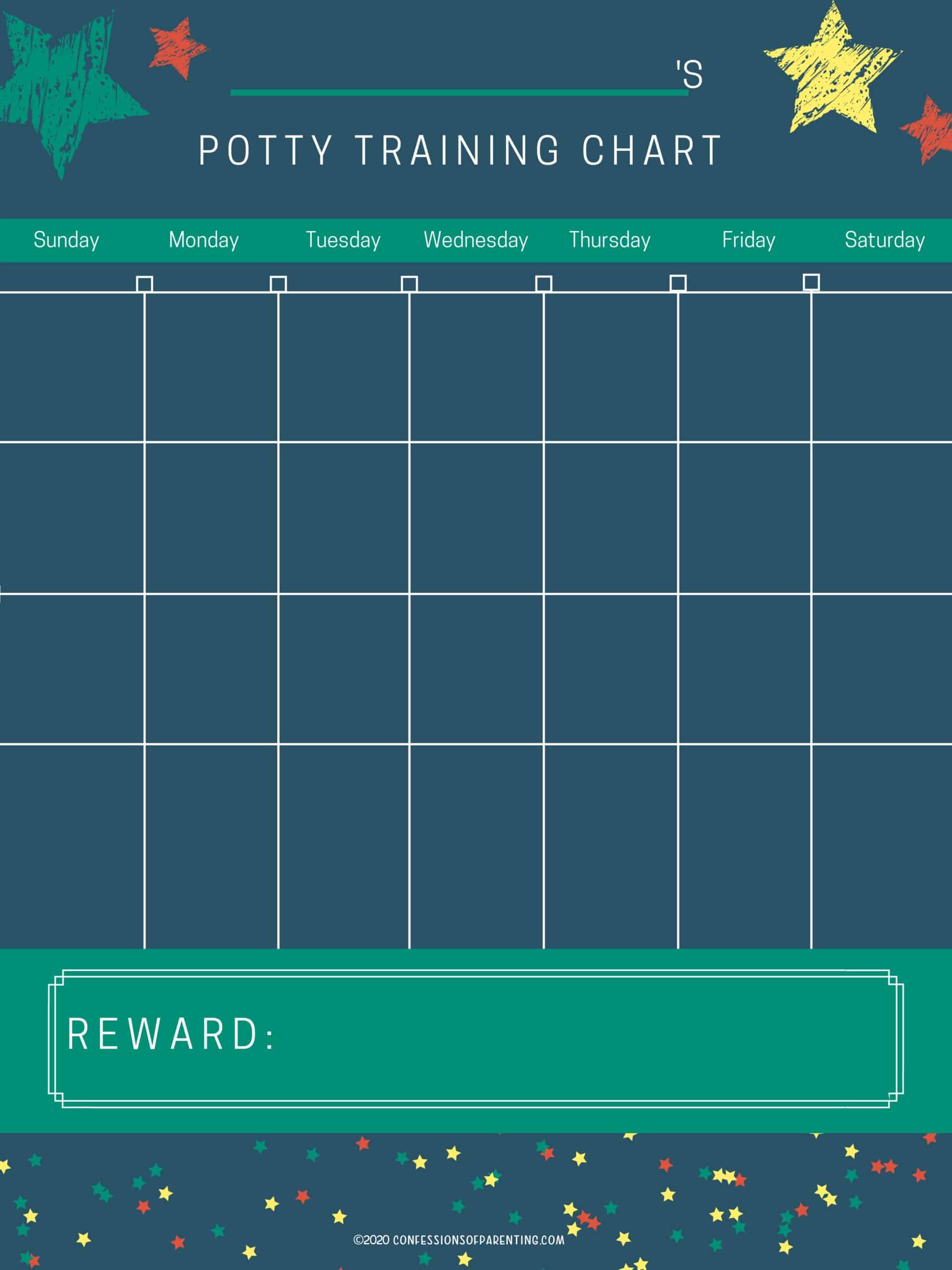

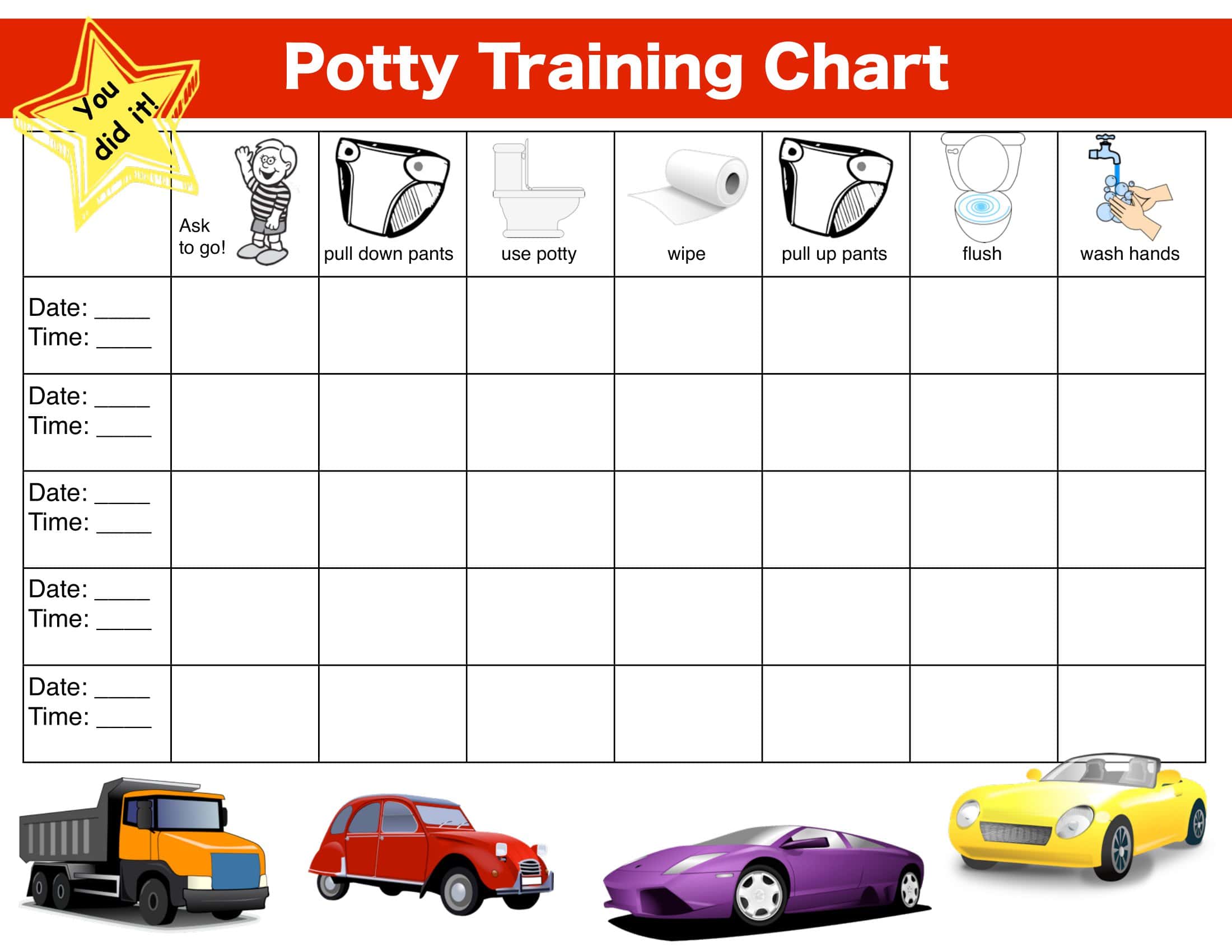
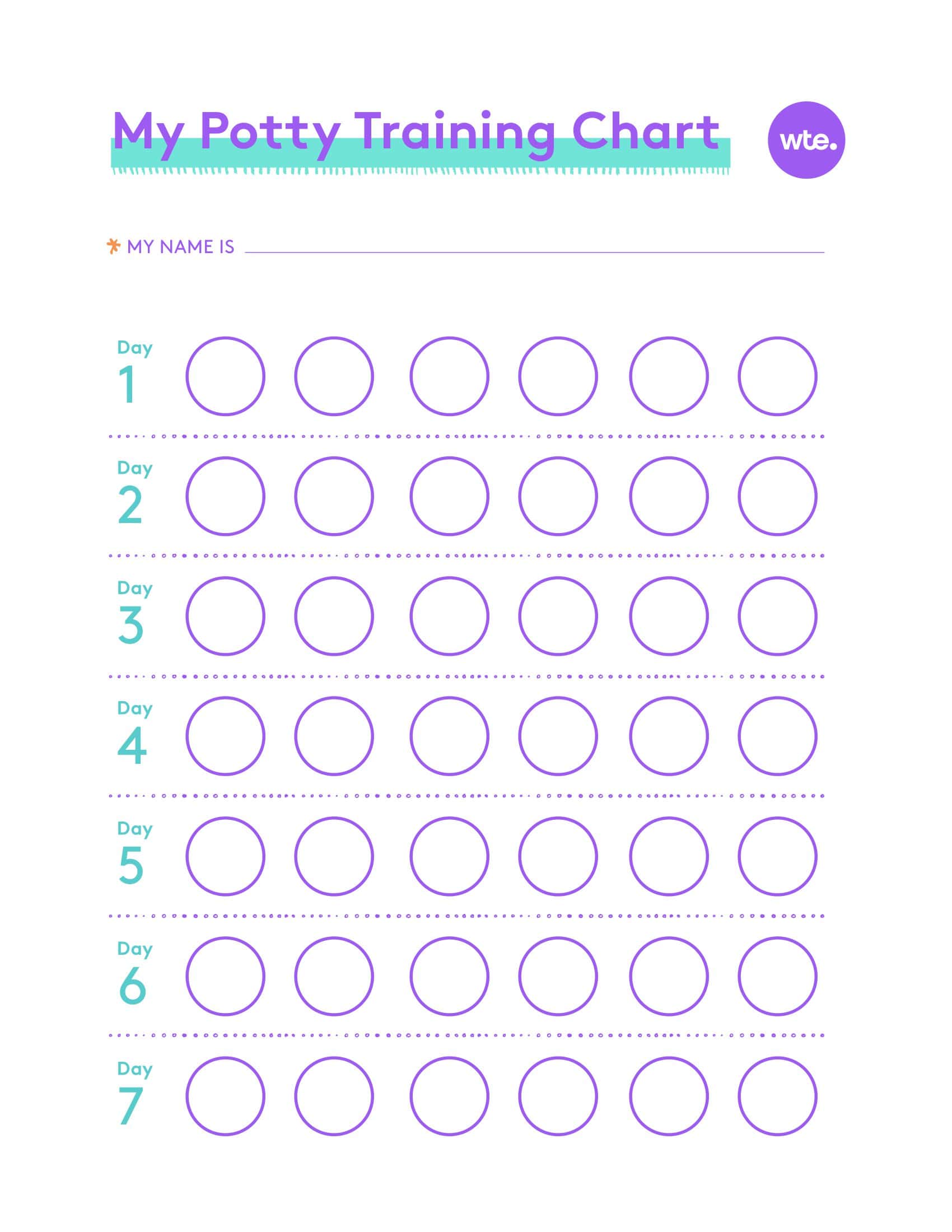




![Free Printable Pie Chart Templates [Excel, PDF, Word] Maker 1 Pie Chart](https://www.typecalendar.com/wp-content/uploads/2023/06/Pie-Chart-150x150.jpg 150w, https://www.typecalendar.com/wp-content/uploads/2023/06/Pie-Chart-1200x1200.jpg 1200w)
![%100 Free Hoodie Templates [Printable] +PDF 2 Hoodie Template](https://www.typecalendar.com/wp-content/uploads/2023/05/Hoodie-Template-1-150x150.jpg)
![Free Printable Reward Chart Templates [Word, PDF] Teachers 3 Reward Chart](https://www.typecalendar.com/wp-content/uploads/2023/03/Reward-Chart-150x150.jpg 150w, https://www.typecalendar.com/wp-content/uploads/2023/03/Reward-Chart-1200x1200.jpg 1200w)
